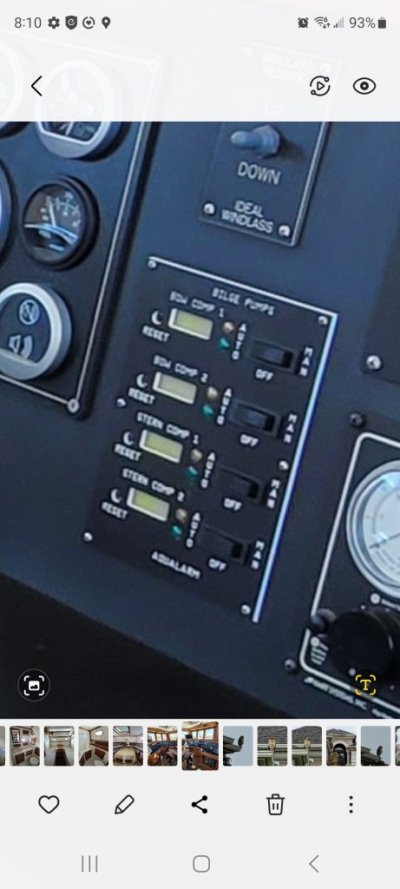I don't believe the RIM (or any of maretron's sensors) stores any data. They just sense then send on the N2K bus. I haven't used one of the DSM products in well over a decade, but as I recall they can display most of the same data as N2KView. But I'm not sure about graphing. Maybe, but I'm not sure. And I don't know if you can send email alerts from a DSM. I would guess not, but don't know.
N2KView is very clumsy to work with, as you note. That's one complaint. But the real killer is their unique and incompatible way of selecting data sources. For any type of data, say GPS info or battery voltage, they do it exclusively based on an instance number. Sometimes it's a device instance, and sometimes it's a data instance, but in either case that number needs to be globally unique across your network. Nobody else requires that, and that's not how the standard says to differentiate and select data sources, nor how to use Instances. The result is that it's difficult, if not impossible to get Maretron's display products to display the data you want. And if you ask about it, Maretron and other vendors just point the finger at each other saying the other is wrong. And NMEA representative just give you a blank stare when asked about it, and say to always use certified products. Well, certification doesn't test for this, so it's of no use.
By way of example, I have four solar charger controllers, an inverter, and two BMSes, and Maretron's display products (N2KView and DSMs) can't differentiate between any of them. Through some backflip hacks, I can get it to reliably display one BMS, but everything else is a mangled mess. I have been complaining to Maretron and NMEA about this for going on 10 years and neither seems to care. Given the standard is now 25 years old, I just accept that it will never change, and I am increasingly moving everything away from N2K. I have never done any control via N2K, only monitoring. Control, and probably half of my monitoring is now on Modbus devices and communications. And I haven't used N2K for Nav data for over 10 years now. So N2K just keeps getting pushed into a smaller and smaller corner each year.
N2K had so much potential, yet has been one of the greatest disappointments of marine electronics. Doing something with Grafana, NodeRed, SignalK, etc. is very tempting, but so far I haven't been able to muster the motivation to open that can of worms.

